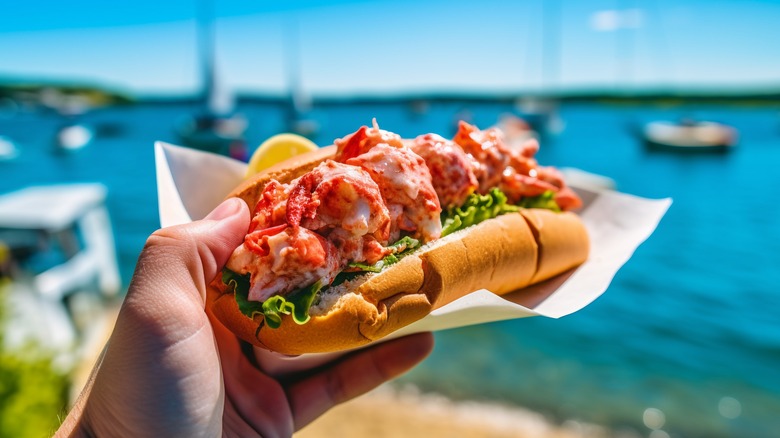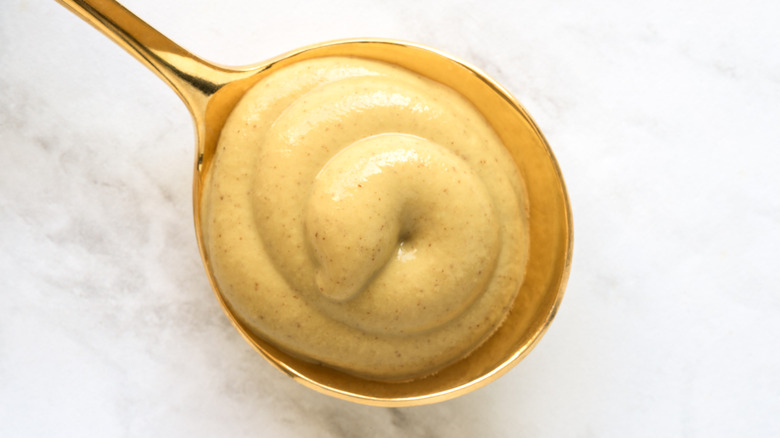Add A Spoonful Of Dijon Mustard To Elevate Your Lobster Roll
New England regional cuisine knows what's up. If you've never experienced the humble beauty of the lobster roll before, the dish piles large chunks of tender, cooked lobster meat, generously coated in butter and mayonnaise, into a butter-toasted, split-top hot dog bun or white bread roll. If we may, we'd like to suggest one addition to this near-perfect classic.
Dijon mustard is the French ingredient that instantly lends a savory twist to any dish. That unique, inimitable Dijon flavor comes from white wine. Also, unlike classic yellow mustard, Dijon is made from brown and black mustard seeds rather than yellow ones. The result is an intense, sharp, complex flavor — the ideal fit for elevating tender, sweet lobster meat. It's common practice to dress lobster rolls with mayo and a squeeze of fresh lemon juice. Dijon brings the acidity plus the savory depth (although, don't let us stop you from using both mustard and lemon juice on your roll, if that's your style).
To incorporate this punchy ingredient, you could simply drizzle a little Dijon on top of your finished, assembled lobster roll. Or, mix a spoonful of Dijon into your mayonnaise, then use the combination to dress your lobster meat as you normally might. Roughly ⅓ cup of dressing per pound of lobster meat is a solid jumping-off point. A few tablespoons of mayonnaise and a few tablespoons of Dijon mustard should do the trick, but feel free to use more or less Dijon to control the boldness.
Get it on with a little Dijon and take your lobster roll to the next level
To avoid overdoing it on the dressing, toss your lobster chunks in the mustard-mayo, then allow the meat to sit on a paper towel or in a colander so any excess liquid can drain away, leaving behind transformative moisture and flavor without weighing it down or overshadowing the briny seafood flavor. For maximum absorption, dress your lobster while the meat is still hot (assuming you're making Maine-style lobster rolls, which are served warm, unlike their Connecticut-style counterpart).
This tip can also be a thrifty way to use the final leftover dregs at the bottom of your mustard bottle. Although, if you plan to stir in additional minced ingredients like celery, chives, or onions, just keep in mind that you might need to use more mustard and mayo for a successful binding agent. Depending on what time of year it is and where you happen to live, if you find lobster is in short supply, that Dijon bite would also work well to upgrade these briny, herbaceous salmon salad rolls. You could even use warm lobster salad instead of chunked lobster meat. Or, if you're feeling imaginative, you could take a cue from another one of our non-seafood dinner recipes and slather your toothy, chunked lobster pieces in a sweet-savory-spicy mixture of Dijon mustard and hot honey butter.

